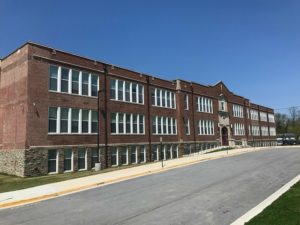State Budget Politicking Puts Important Public Services At Risk

Among the funding Gov. Hogan may withhold is $127 million for school repairs.
Photograph by Eli Pousson/Creative Commons Public Domain
Marylanders may once again see schools and other services essential for broad prosperity funded at levels below what meets public needs due to an ongoing disagreement between the governor and legislature about the budgeting process.
Funding for school construction, public safety programs, and other priorities remains in limbo as Governor Hogan decides whether to spend $182 million the legislature designated for a variety of needs. Maryland’s budget is largely controlled by the governor. Unlike most states, the Maryland legislature has limited powers to adjust the governor’s budget. Legislators can reduce allocations, but not increase or move funding, unless they convince the governor to go along with them.
In the process of reviewing the governor’s proposed budget during this year’s legislative session, the General Assembly identified some areas that needed additional funding. The programs in question include:
- $127 million for renovations, repairs, and replacement of aging school facilities
- $7 million for Baltimore Police Department technology improvements
- $3.5 million to address Maryland’s backlog of untested rape kits
- $2.5 million for transit in Southern Maryland
- $1.6 million in aid for the financially struggling Baltimore Symphony Orchestra
- $1 million for YouthWorks, Baltimore’s summer jobs program for youth ages 14-21
- Hundreds of thousands of dollars for community colleges in Hagerstown and Prince George’s County
In order to provide funding for these priorities, the legislature reduced the amount of money that would be put into Maryland’s rainy day fund this fiscal year, while still maintaining it at the required level. They also cut funding for the controversial BOOST program, which directs state dollars into private education and often benefits families who would have sent their children to private school anyway.
The legislature identified these needs after a thorough budget review process that includes hearing testimony and reviewing public comments on the budget proposal. The state has the money to invest in these vital needs and there is no reason – other than politics – to hold back these funds.
Because of Maryland’s unusually governor-dominant budget process, this tactic of “fencing off” money in the budget is one of the only ways the legislature can influence state spending. While the governor may not like this approach, punishing students and putting public safety at risk by refusing to make investments the state can well afford is not the answer.
